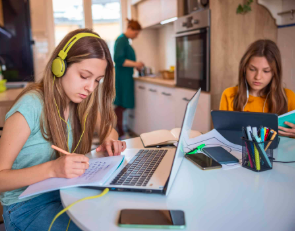As education continues to shift into digital spaces, virtual classrooms are evolving beyond video calls and online quizzes. One innovative and effective tool gaining popularity is the classroom blog. Integrating blogs into virtual learning environments can enhance communication, promote reflection, and deepen student engagement.
What Is a Classroom Blog?
A classroom blog is a digital space where students and teachers can share ideas, showcase work, and reflect on learning. Whether used as a journal, a place for group discussion, or a portfolio of progress, blogs are flexible tools that adapt to nearly any subject or age group.
Why Use Blogs in Virtual Learning?
1. Encourages Writing and Critical Thinking
Blogging allows students to express their thoughts in a structured yet creative way. Writing for an audience—even if it’s just classmates—can help learners practice organizing their ideas, thinking critically, and developing a confident voice.
2. Builds a Sense of Classroom Community
In online learning environments, students often feel disconnected. Blogs offer a platform for interaction. Reading peers’ posts and leaving comments creates an ongoing dialogue that fosters connection and collaboration.
3. Supports Reflection and Deeper Learning
When students revisit their blog entries, they see their growth over time. Reflective writing encourages them to think about what they’ve learned, how they learned it, and why it matters.
4. Integrates Digital Literacy
Managing a blog teaches important 21st-century skills such as online etiquette, multimedia integration, and responsible digital publishing. These are real-world skills that serve students beyond the classroom.
Ideas for Blog Activities in Online Classrooms
Weekly Learning Logs – Ask students to summarize what they learned each week and how they felt about the material.
Peer Book Reviews – Students can post reviews and discuss what they’re reading in English or literature classes.
STEM Challenges – Share experiments or projects, with pictures or videos embedded.
History from a New Lens – Students write blog posts from the perspective of historical figures or witnesses to events.
Art Showcases – Use blog space to exhibit drawings, designs, or digital artwork.
Tips for Teachers Starting with Blogs
Set clear expectations about content, tone, and privacy.
Choose a safe blogging platform that allows moderation and privacy controls.
Model blog posts before students start writing their own.
Make blogging part of the grading rubric to encourage consistency and thoughtfulness.
Final Thoughts
Blogs bring a human touch to digital classrooms. They turn passive learning into active engagement and give students a voice that extends beyond the screen. Whether used once a month or every week, blogs can become a dynamic part of your online teaching toolkit.














